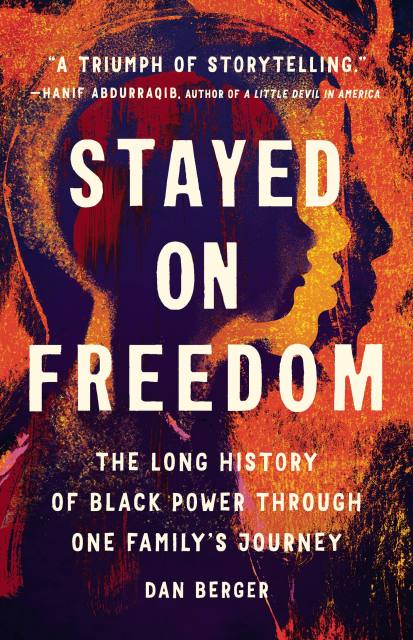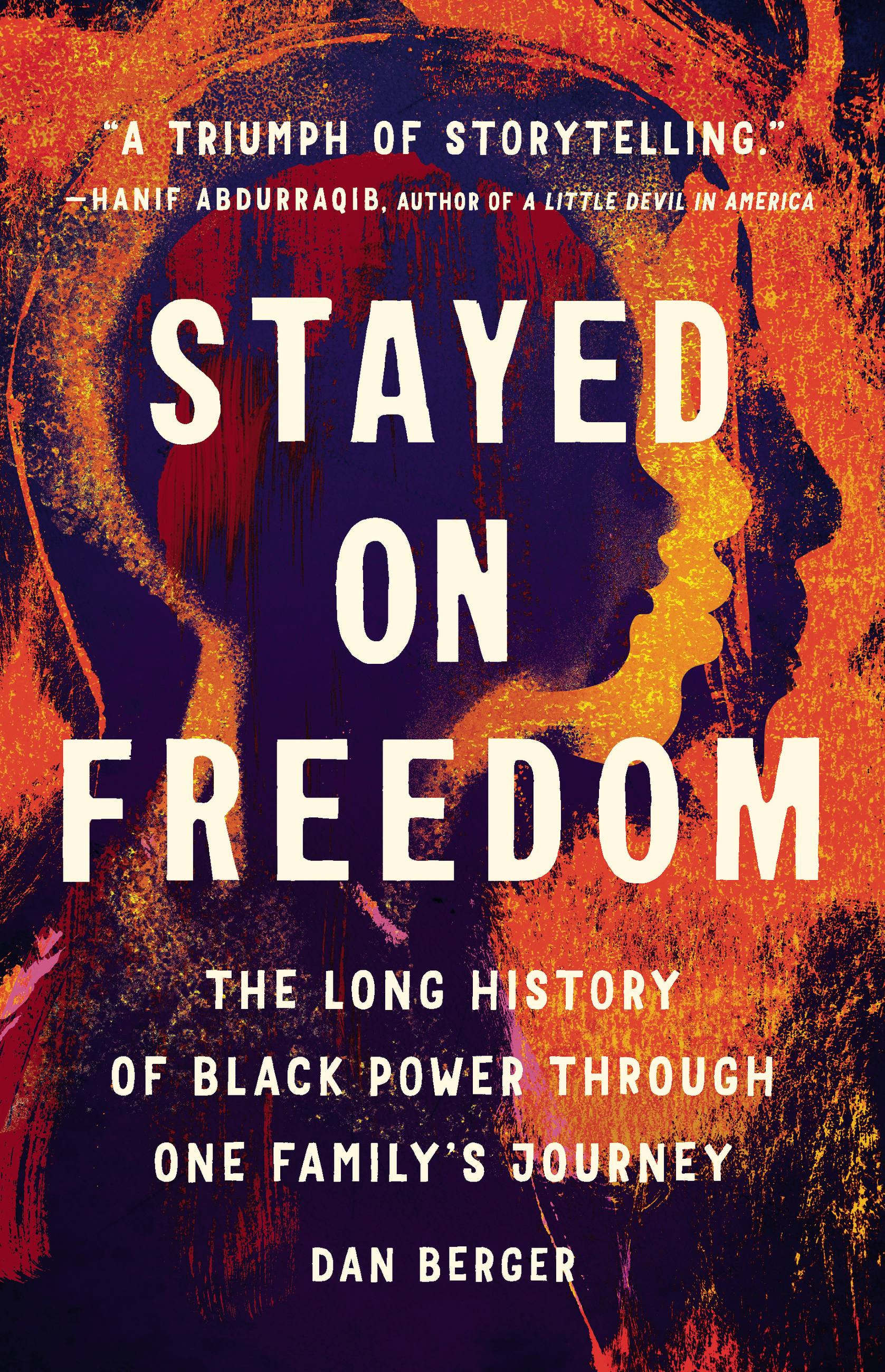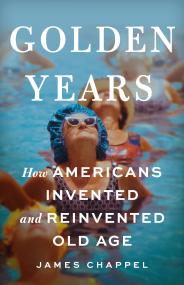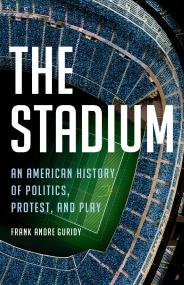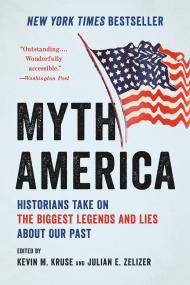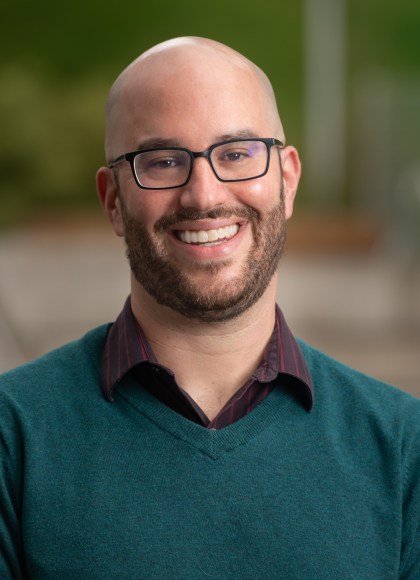Promotion
25% off sitewide. Make sure to order by 11:59am, 12/12 for holiday delivery! Code BEST25 automatically applied at checkout!
By clicking “Accept,” you agree to the use of cookies and similar technologies on your device as set forth in our Cookie Policy and our Privacy Policy. Please note that certain cookies are essential for this website to function properly and do not require user consent to be deployed.
Stayed On Freedom
The Long History of Black Power through One Family’s Journey
Contributors
By Dan Berger
Formats and Prices
- On Sale
- Jan 24, 2023
- Page Count
- 400 pages
- Publisher
- Basic Books
- ISBN-13
- 9781541675360
Price
$32.00Price
$40.00 CADFormat
Format:
- Hardcover $32.00 $40.00 CAD
- ebook $18.99 $24.99 CAD
This item is a preorder. Your payment method will be charged immediately, and the product is expected to ship on or around January 24, 2023. This date is subject to change due to shipping delays beyond our control.
Buy from Other Retailers:
The Black Power movement, often associated with its iconic spokesmen, derived much of its energy from the work of people whose stories have never been told. Stayed On Freedom brings into focus two unheralded Black Power activists who dedicated their lives to the fight for freedom.
Zoharah Simmons and Michael Simmons fell in love while organizing tenants and workers in the South. Their commitment to each other and to social change took them on a decades-long journey that traversed first the country and then the world. In centering their lives, historian Dan Berger shows how Black Power united the local and the global across organizations and generations.
Based on hundreds of hours of interviews, Stayed On Freedom is a moving and intimate portrait of two people trying to make a life while working to make a better world.
-
“Beautiful, inspiring, heartbreaking, gut-wrenching, and thought-provoking…Highly recommended.”Library Journal (starred review)
-
"A page turner.… a critical text to help the current generation of radicals, the Black Lives Matter activists, study lessons of lives well-lived.”Facing South
-
“In this regard, with subtle urgency, Stayed on Freedom also reads like a timely admonition for our times.”Inquest
-
“Both personal and with a big-picture view—a welcome contribution to the literature of the civil rights movement.”Kirkus
-
Stayed On Freedom is a movement story and a love story all wrapped together. It does not avoid or elide the problems and contradictions of a movement life—the traumas and costs, disappointments and betrayals. Dan Berger assembles a sensitive, honest, and beautiful intergenerational account of the extraordinary lives of Michael and Zoharah Simmons, their kin and comrades, and the worlds they dreamed and, still, try to create. Stayed On Freedom not only compels us to rethink the Black freedom movement but radically alters our understanding of love and struggle.Robin D. G. Kelley, author of Freedom Dreams and Thelonious Monk
-
Dan Berger yet again brings together superb research, a deep commitment to justice, and beautiful writing in Stayed On Freedom. This is a rare intimate portrait of the stakes, evolution, and expansiveness of the Black freedom movement that will join classic texts on this period.Imani Perry, New York Times bestselling author of South to America
-
"Stayed On Freedom is a triumph of storytelling. Dan Berger generously offers an ever-blooming portrait of two people's struggle without reducing their story to struggle alone. This is a deeply loving, deeply caring text that is both tender and ferocious in approach."Hanif Abdurraqib, author of A Little Devil in America
-
“Dan Berger is one of our most gifted historians of Black radical thought and activism of the 1960s and 1970s. By way of a political biography of two relatively unknown organizers, Michael Simmons and Zoharah Simmons, Berger casts the spotlight away from already known figures and unearths the work of ordinary Black people in sustaining the Black radical movement known as Black Power in the late 1960s and beyond. Told through the experiences of rank-and-file movement participants, Stayed On Freedom powerfully refutes the conventional wisdom of Black Power as the destructive undoing of good will created by the Civil Rights Movement, instead showing it to be propelled by love and an abiding desire for freedom. An original and necessary book.”Keeanga-Yamahtta Taylor, author of From #BlackLivesMatter to Black Liberation
-
"I have to praise this book in at least three ways. In the literary sense, this is some of the best historical storytelling I have ever read. Politically speaking, we need more histories like this, that move beyond the individual and examine how liberation moves through interpersonal relationships, and we need to do it like Dan Berger does it, with love. And personally speaking, this book is a literal revelation! I've known this family for most of my adult life and I learned things from this book I would have never otherwise known. This book is a miracle, a model, and a must-read. Thank you Dan Berger!"Alexis Pauline Gumbs, author of Undrowned
Newsletter Signup
By clicking ‘Sign Up,’ I acknowledge that I have read and agree to Hachette Book Group’s Privacy Policy and Terms of Use
